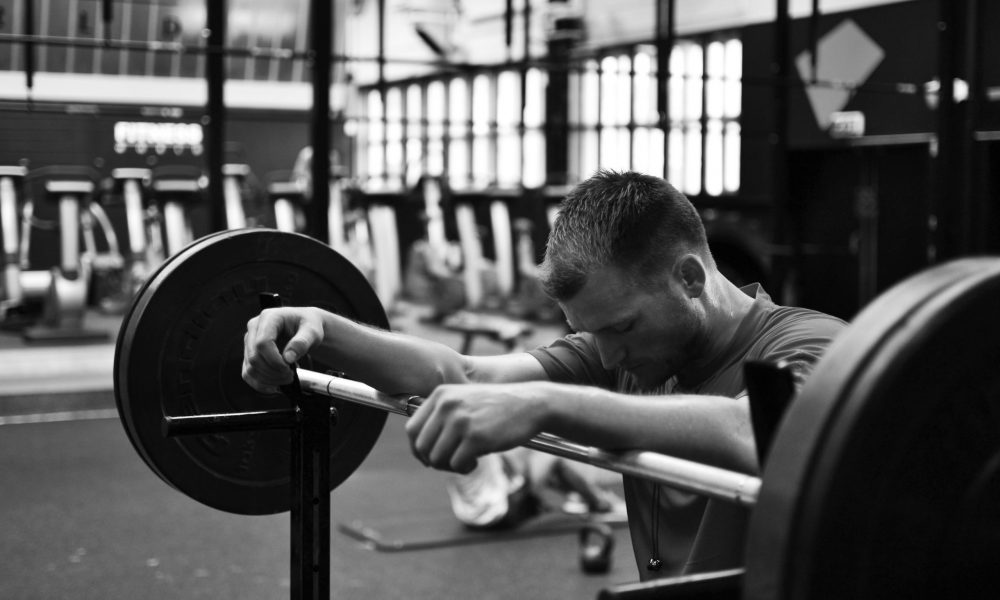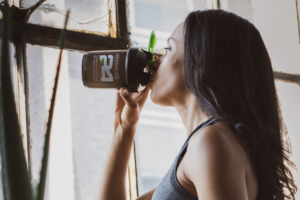
How to Finally Reign Over Any Sabotaging Food Craving
Let’s talk about those food cravings that sabotage your weight loss efforts. By definition, a craving is an intense desire to consume a particular type of food that is hard to resist.

Imagine this. You’re walking outside and suddenly, a supernatural hole peels open from the sky. God himself appears out of the hole and immediately sprinkles some sparkly powder on you. He declares this powder will enchant you for the next 8 months making every dollar you earn multiply by 10.
Pretty sweet huh?
So, if you make $1000 per week, it now becomes $10,000 per week. Basically, you get to add a 0 to the end of every paycheck for 8 months straight.
Your first instinct would be to generate as much money as possible even if it means frequently working overtime, selling random junk during the weekends, and sweet-talking your boss for a raise.
You can potentially become a millionaire by the end of 8 months. Without the enchanted powder, you can still become a millionaire, but you’ll need much more effort over a longer timeframe. In other words, taking advantage of this enchanted state has an extremely favorable effort to reward ratio. You might have to work harder, but the reward is so exponentially greater.
Ok, let’s take a dive back to reality where unfortunately, money multiplying powder doesn’t just fall from the sky. Fortunately, a similar and very real phenomenon exists, not for financial gain, but for muscular gains.
This phenomenon is called newbie gains and is the “enchanted” window of opportunity where beginner lifters can gain muscle at remarkably fast rates.

In both men and women, we’ve seen studies in beginners produce as much as over 59% muscle growth in 12 weeks (1). Genetic variability is involved, but don’t forget these studies are merely trying to find a general effect. They’re not optimizing, periodizing, or individualizing training programs nor controlling for optimal nutrition meaning these beginners can easily build muscle even faster if all variables were individually optimized in practice (2,3).
Anecdotally, newbie gains can last between 6-12 months or even a bit longer depending on various factors. Taking advantage of this timeframe is one of the wisest life investments a person can make considering the effort/time to reward ratio. If done correctly, over half of your lifetime muscular genetic limit can be reached in your first year of lifting.
If you don’t take your early years of lifting seriously, you’ll come to regret it. Just ask any experienced lifter. As you age in strength training experience, muscle hypertrophy rapidly slows down while volume requirements go up. Once advanced enough, you’ll have to do more work for less return which obviously sucks.
Newbie gains mostly apply to people with the following characteristics:
Ultimately, the opportunity for newbie gains exists on a spectrum. For example, comparing an inactive teenager who’s played video games his whole life and a 30 year old desk worker who plays basketball on the weekends, the former would experience more robust newbie gains.
The teenager is younger and completely novel to any exercise, let alone the body disrupting mechanical tension signal needed for hypertrophy (5). However, while the desk worker won’t build muscle as fast, he’s still primed for newbie gains.
In both cases, they’re far from their muscular limit and are pretty much novices to strength training which is most important in determining who counts as a physiological beginner.
Unfortunately, while every human starts off as a newbie, so many newbies are unable to maximize their newbie gains even if they’re aware of the phenomenon. For starters, many beginners take a long time to master consistency especially without professional help. It’s deeply difficult to be consistent with an extremely optimal training/nutrition program after spending most of your life inactive/undisciplined.

Even with very conservative protocols, many newbies will give up or fall off track after experiencing inevitable soreness or mental discomfort from the initial weeks.
Not all beginners are like this, but even disciplined beginners will likely not maximize their newbie gains. This is because consistency, grit, and effort can only get you so far. Learning and mastering intelligent strength training takes years. By the time you experience enough trial and error to learn how to optimize/individualize every variable like intensity, volume, exercise technique, etc, you’ll use up too much time and will no longer be a novice.
On top of all this, lean beginners make the mistake of not eating enough. If you’re an overweight beginner, you can still take good advantage of your newbie gains while dieting because all the extra body fat can act as energy to pay for the metabolic demands of building new muscle.
However, for lean beginners aka skinny people or active people new to strength training, you’ll need to eat in a significant surplus to maximize growth. Your muscles don’t magically start expanding without enough resources for growth.
One study with lean newbies who started strength training just 4 times a week on a pretty good program with minimal cardio, divided subjects into 3 groups (6). One group ate their normal diet at maintenance which served as a control group while the other 2 groups ate in a 2000 calorie surplus with differing yet irrelevant macros thanks to a mass gainer shake. These 2 groups ended up taking in over 4000 calories each day for 8 weeks straight.
You would think they at least got a little fat, but they didn’t. It all went towards muscle growth resulting in significantly more muscle hypertrophy and slightly higher non-significant strength gains than the control group. Some of them even lost some fat.
In other words, you get newbies, put them on a structured lifting plan, force them to be consistent, and feed them lots of calories, they will gain serious lean body mass without repercussions. This was as high as 13 pounds of muscle in 8 weeks during this study which is exponentially faster than what an advanced lifter could even fantasize about.
Very few novices will truly maximize this glorious window of opportunity of newbie gains, but it physiologically can be done. You just have to get through all the psychological and practical barriers. If you’re a novice who wants to do so, here are the key practical tips:
If you’re not a newbie, that sucks for you. You’ll just have to build muscle slower with a more reasonable caloric intake. Seriously, I wish I could sugarcoat this to make you feel better, but once you’ve built decent muscle and your body has gotten used to years of the mechanical tension stimulus, you’re no longer a physiological beginner.
You can’t go back to being primed for turbo fast muscle growth without intentionally losing a lot of current muscle size. All you can do now is continue training and eating as optimally as you can and be grateful for the growth you do get.
But hey, the good news is you can still pay it forward to the next generation. Why not share this article with a newbie in your life? I’m sure all experienced lifters still wish somebody would’ve explained the science and urgency of newbie gains to them sooner.
Grab my free Stupid Simple Scroll to Mastering Hypertrophy

Let’s talk about those food cravings that sabotage your weight loss efforts. By definition, a craving is an intense desire to consume a particular type of food that is hard to resist.

One of the points of partial reps is that you can use higher loads given the same effort and volume. Could there be any benefit in doing this? Could sacrificing range of motion produce better results? Or is it just a way to stroke your ego?

You’ve probably heard the advice from meatheads to have protein immediately after your workout or else you’ll stay scrawny like a toothpick.